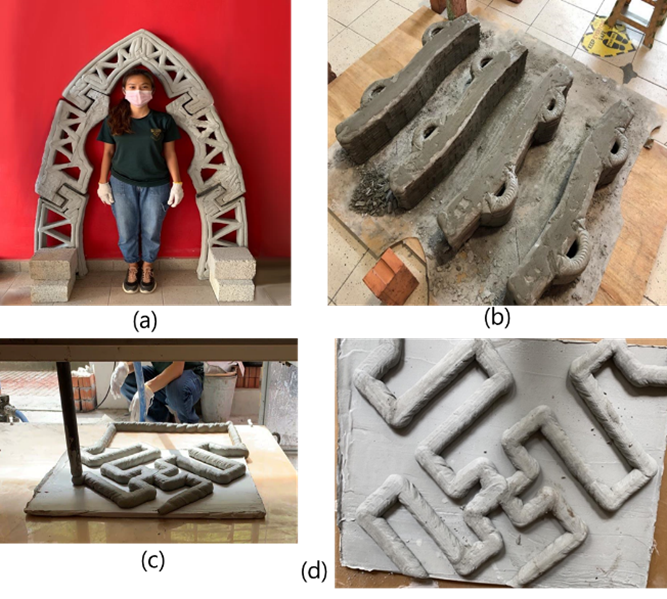Sustainability
3D-Printable Marine Clay-Limestone Composite for Building Applications
________________________________________
Project Title
3D-Printable Marine Clay-Limestone Composite for Building Applications
Problem Statement
Marine clay (MC) is a widely available raw material commonly found in coastal areas. It is abundant in Singapore because it is excavated during underground construction works and treated as a waste product. The central idea of this project is to explore the use of this abundant yet under-utilised resource by using innovative 3D printing technology that enables the application of clay materials to a wider range of functions in buildings.
Objective
- To derive the compositions of material mixes containing MC and limestone that possess acceptable mechanical properties.
- To study the feasibility of printable Singapore MC-limestone composites for the following four types of products:
- Trussed shell or arch as outdoor shelters,
- Ornaments for external (façade) and internal decorative purposes in buildings,
- Special features on conserved heritage buildings, and
- Cost effective formwork for casting reinforced concrete structures.
Outcomes/Benefits
- The team has successfully printed a trussed arch, concrete formwork and heritage motif (for Baba House).
- The team has discovered the unique properties of printable concrete containing limestone and MC. Possibly the first effort of this nature, the ability to successfully print deliverables shows the potential of the proposed material and technical knowhow.

Trussed arch (a), formwork (b) and preserve motif (c and d) were 3D printed.




